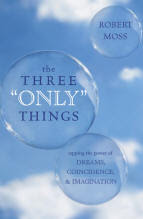
You could call it the "Metamorphosis Model," or the "Synthetic Model," but there is most definitely a new way of doing business. This new, feminine model allows people to work in a more fulfilling and flexible way than what the traditional model allowed. It's the result of women getting into business for themselves on a huge scale, and in a new highly profitable way.
Of course women have always been in business, making money is what's new-ish about it. If you consider all the things women have had to do to keep a family operational throughout the centuries, you realize that women have always done a lot of different things seemingly at the same time. We're just like that.
This new model challenges everything Frederick Taylor, the Father of Scientific Management, taught us. We see the fruit of Taylor's influence everywhere - it's the automatization, finding the best way to do a thing and then doing it that way over and over, chopping up tasks into several pieces, and in general, you could see it as at dehumanization in the workplace. The feminine model of entrepreneurship leaves Mr. Taylor in the dust.
Consider the differences between the old model and the feminine model about the division of labor:
Old Model Division of Labor
Divide up a job so that 5 people do the same, small repetitive task for 8 hours a day. Get a supervisor to make sure these workers don't go out and get all creative on you, changing the "best" way to do the task.
Feminine Model Division of Labor
Ruthlessly delegate what you don't like to do. Find a personal assistant who will cheerfully file, answer the phone, walk your dog, and take your clothes to the cleaners. She's happy to do this because she gets to work in a fun and relaxed environment and has a lot of control over the hours she works.
The boss does stuff she likes to do, like writing marketing materials, thinking up new informational products, and keeping in touch with customers.
The feminine model is a humane way of doing business that gives everyone the chance to contribute at a different level. It's not a sewing circle in that people are just sitting around, chatting, and doing their sewing and not going anywhere.
It's working with traditional tools like goals, strategic planning, production and marketing, in a way that synthesizes individual strengths. One of the supporting concepts for this model is that people who love their jobs, do them better.





